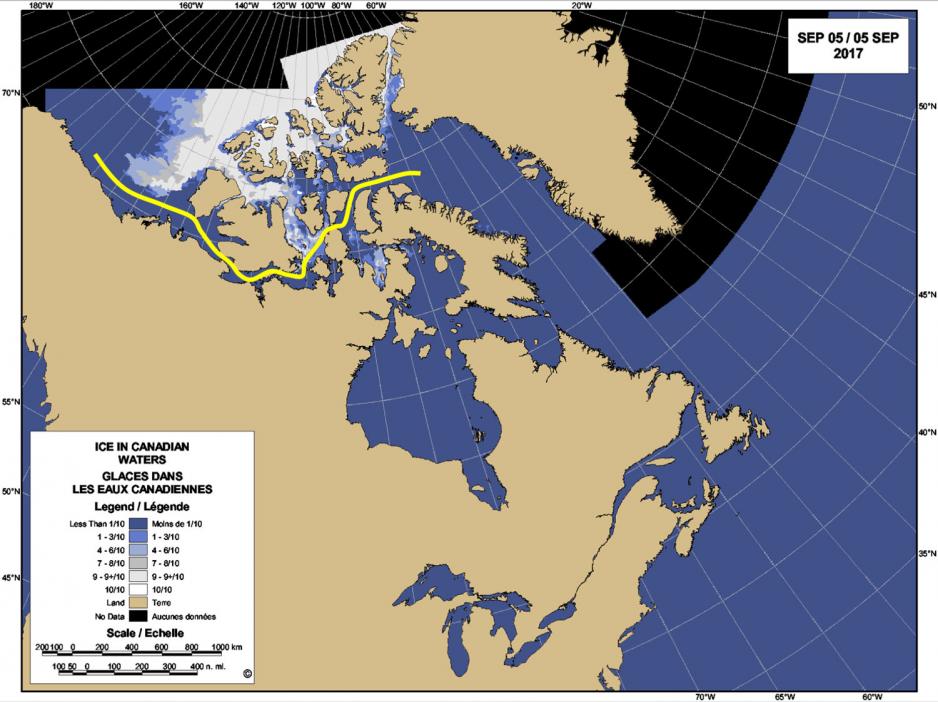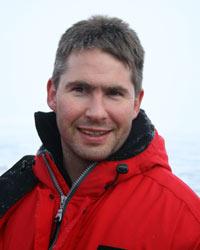Arctic Sea Ice Recovers Slightly as it Reaches Annual Minimum

Arctic sea ice extent reached an annual minimum of 4.64 million square kilometers on September 13th according to the National Snow and Ice Data Center (NSIDC) in Boulder, Colorado. This represents the eighth lowest extent in the 38-year satellite observation era and a slight increase over 2016 which recorded a low of 4.14 million km2.
However, it continues the trend of substantially reduced ice coverage in comparison to the 1970-1990s, when summertime minimums were in excess of seven million km2.
Unlike previous years, the summer months in the Arctic were dominated by cooler and cloudier conditions not conducive to rapid melt. As a result, ice decline especially in July and August was slower overall than in recent years. "Thanks to the relatively cold summer, the sea ice managed to bounce back somewhat, but this year’s September minimum is by no means a good sign," stresses Lars Kaleschke from University of Hamburg’s Center for Earth System Research and Sustainability.

Warm winter slows ice growth
Arctic sea ice entered the year 2017 at the lowest level since satellite imagery began in 1979. A series of dramatic warming events throughout the fall and winter, with temperatures sometimes above freezing even at the North Pole, hampered the formation of new ice. As a result ice extent in October 2016 and March 2017 were the lowest ever recorded. "This winter, the Arctic remained unusually warm, and the sea-ice coverage in March was lower than in any March before," explains sea-ice physicist Marcel Nicolaus from the Alfred Wegener Institute in Germany.
Cool summer saves Arctic sea ice
Unlike the record melt season of 2012, when a series of very strong storms interspersed with periods of sunny skies dramatically shrank the ice over the period of just a few weeks, the Arctic faced less adverse conditions this year. The summer was dominated by low pressure systems which bring cooler temperatures and favorable winds. "Low initial conditions were not met by favorable summer weather like 2012," says James Overland, Research Oceanographer at the National Oceanic and Atmospheric Administration.

Similar sentiments are voiced by Julienne Stroeve, Senior Research Scientist at the NSIDC. "We had a rather benign summer in regards to temperatures, it was a mostly stormy summer, lots of cold core cyclones so melt was not very robust this summer. But despite not having a particularly warm summer, the ice is still among the 10 lowest so that highlights that the ice is thinner than it was 30 years ago when such a summer would have meant quite a bit more ice."
Limited ice opens up shipping lanes
As in previous years, the low ice extent allowed for growing commercial shipping traffic along the Northern Sea Route. The Chukchi and East Siberian Seas along the Russian coast line were completely ice free by mid-August and the route was used by hundreds of vessels, including the world’s first ice-breaking liquefied natural gas carrier. On the other side of the Arctic Ocean, higher ice concentration blocked the northern parts of Canada’s Northwest passage. As a result, the cruise ship Crystal Serenity, which had not encountered any ice during last year’s inaugural voyage, was routed through the southern Franklin Strait with the assistance of the Canadian Coast Guard icebreaker Des Groseilliers.

Looking beyond sea ice extent
The Arctic has seen various patterns over the past decade. Warm winters followed by cool summers, and record-breaking summers by somewhat surprising recoveries of sea ice the following winter. Scientists are not quite sure yet what this means going forward. It appears Arctic sea ice may have entered a new equilibrium where the minimum ranges between four and five million km2., explains Stroeve. "[This summer] shows that the September minimum still depends very strongly on the summer weather patterns, that preconditioning by anomalously low ice volume isn’t enough."
Furthermore, experts urge to look beyond the somewhat simplistic and two-dimensional ice extent. What is hidden below the ice may be more important going forward, explains Nicolaus. "I still think that there is a more ‘hidden’ trend in all these ice extent time series: the sea ice volume. We are more and more studying the sea ice thickness distribution, and I assume that even over the last 10 years [where ice extent remained stable between four and five million km2] the ice volume has further decreased." At least for now sea ice at the top of the world is holding on.



